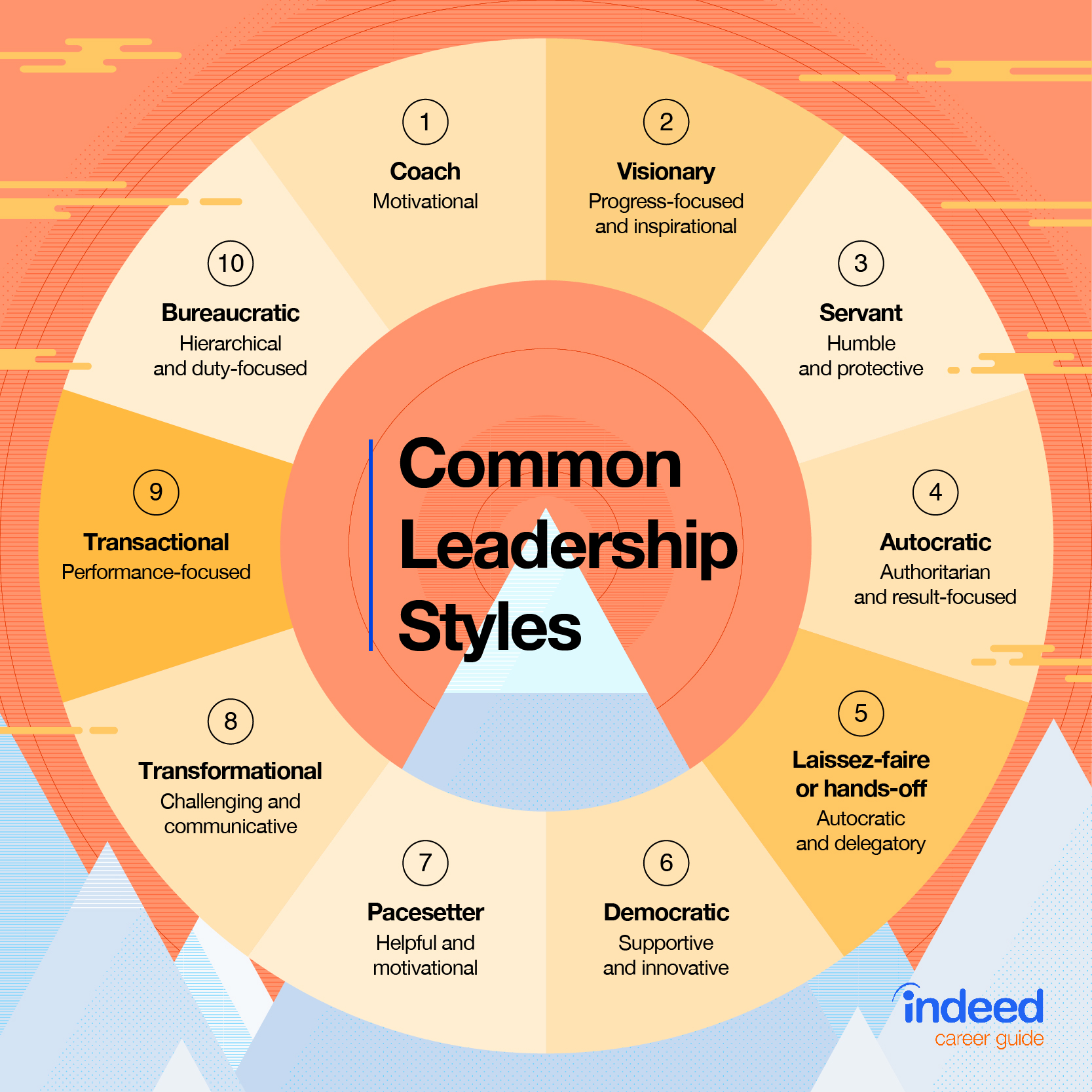In today’s fast-paced world, the ability to foster innovation and encourage creative thinking and problem-solving has become more important than ever. The relentless advancement of technology and the increasing complexity of our society have created a need for individuals who can think outside the box and come up with innovative solutions to the challenges we face. In this article, we will explore the importance of fostering innovation, the benefits of encouraging creative thinking, and practical strategies that can help you become a master problem-solver. So, let’s dive in and unlock your potential to unleash creativity and unlock the power of innovation in your life.

This image is property of pixabay.com.
The Importance of Fostering Innovation
In today’s rapidly evolving business landscape, fostering innovation has become crucial for organizations to stay competitive and thrive. Innovation brings about new ideas, processes, and technologies that can drive business growth, create a competitive advantage, and stimulate continuous improvement. By fostering a culture of creativity and providing the necessary resources and tools, organizations can unlock the full potential of their employees and drive innovation forward.
Creating a Competitive Advantage
Fostering innovation within an organization can create a significant competitive advantage. By encouraging employees to think creatively and develop innovative solutions, organizations can differentiate themselves from their competitors. In a world where products and services can easily be replicated, a culture of innovation can give organizations a unique selling proposition that sets them apart in the market. Embracing new ideas and methods can lead to the development of groundbreaking products or processes that resonate with customers and attract new business opportunities.
Driving Business Growth
Innovation is a key driver of business growth. By continuously seeking new opportunities and embracing change, organizations can expand their market reach, increase their customer base, and generate higher revenues. Innovation allows organizations to adapt to evolving customer needs and preferences, which is essential in today’s fast-paced business environment. Additionally, innovative organizations are more likely to attract top talent, as employees are drawn to organizations that are forward-thinking and embrace creativity. With an empowered and innovative workforce, organizations can drive sustained growth and achieve long-term success.
Stimulating Continuous Improvement
Fostering innovation also stimulates continuous improvement within an organization. By encouraging employees to think outside the box and challenge the status quo, organizations can identify opportunities for improvement and enhance their processes, products, and services. Innovation is not a one-time event but a continuous journey of improvement. Through a culture of creativity and innovation, organizations can stay on the cutting edge of their industry, adapt to changing customer expectations, and continuously refine their operations to increase efficiency and effectiveness.
Cultivating a Culture of Creativity
To foster innovation effectively, organizations must cultivate a culture of creativity that encourages and supports innovative thinking. This involves creating a safe and supportive environment, encouraging risk-taking, and providing the necessary resources and tools.
Creating a Safe and Supportive Environment
To promote innovation, organizations must create a safe and supportive environment where employees feel comfortable sharing their ideas and taking risks. This requires leaders to foster an atmosphere of trust, where employees feel valued and their contributions are respected. By promoting open communication, organizations can create a space where diverse perspectives are encouraged and collaboration is fostered. It is important to create a culture that does not punish failure, but rather sees it as an opportunity for learning and growth. When employees feel safe to express their ideas and take risks, innovation flourishes.
Encouraging Risk-Taking
Innovation often involves taking risks and stepping outside of one’s comfort zone. To foster innovation, organizations must encourage and support risk-taking among their employees. This can be achieved by creating an environment where failure is seen as a valuable learning opportunity rather than something to be feared. When employees feel empowered to take calculated risks without the fear of negative repercussions, they are more likely to think creatively and come up with innovative solutions. Encouraging risk-taking also requires leaders to provide the necessary support and resources to help employees navigate and learn from their failures.
Providing Resources and Tools
To foster innovation, organizations must provide employees with the necessary resources and tools to support their creative thinking and problem-solving processes. This includes investing in training and development programs that enhance employees’ creative thinking skills and problem identification capabilities. Additionally, organizations should provide access to technologies and tools that facilitate innovation, such as brainstorming software, collaboration platforms, and prototyping tools. By equipping employees with the right resources and tools, organizations can empower them to turn their innovative ideas into tangible solutions.

This image is property of pixabay.com.
Developing Creative Thinking Skills
Creative thinking is a fundamental skill that plays a crucial role in fostering innovation. By developing creative thinking skills, individuals can approach problems and challenges from new perspectives, identify opportunities for improvement, and generate innovative solutions. Organizations can foster creative thinking by embracing curiosity and openness, promoting divergent thinking, and enhancing problem identification and framing skills.
Embracing Curiosity and Openness
Curiosity is a driving force behind innovation. By encouraging employees to be curious and explore new ideas, organizations can unlock their creative potential. Leaders should create a culture that celebrates questioning, experimentation, and learning. Encouraging openness also involves embracing diverse perspectives and challenging conventional wisdom. When employees feel encouraged to speak up and share their ideas, innovative solutions can emerge.
Promoting Divergent Thinking
Divergent thinking is the ability to generate multiple ideas and solutions. Organizations can promote divergent thinking by encouraging brainstorming sessions and creating a safe space where all ideas are welcomed and valued. By encouraging employees to consider different viewpoints and explore a wide range of possibilities, organizations can foster creativity and drive innovation. Divergent thinking helps break away from traditional ways of thinking and opens the door to new and innovative approaches.
Enhancing Problem Identification and Framing
Effective problem-solving starts with accurately identifying and framing the problem. Organizations can enhance employees’ problem identification and framing skills by providing training and encouraging them to approach challenges from different angles. By breaking down complex problems into smaller, more manageable components, employees can gain deeper insights and uncover innovative solutions. By emphasizing the importance of problem identification and framing, organizations can foster a culture of innovation and enable employees to tackle challenges with a fresh perspective.
Effective Strategies for Encouraging Creative Thinking
Encouraging creative thinking requires both individual and collective effort. Organizations can utilize various strategies and techniques to stimulate creative thinking among their employees, such as brainstorming, mind mapping, role-playing and simulation, reverse thinking, and collaborative problem-solving.
Brainstorming
Brainstorming is a widely-used technique for generating creative ideas and solutions. In a brainstorming session, a group of individuals comes together to generate as many ideas as possible, without judgment or criticism. This free-flowing exchange of ideas allows for the exploration of different perspectives and encourages the development of innovative solutions. By fostering a collaborative and non-judgmental environment, organizations can harness the collective creativity of their employees and generate fresh ideas.
Mind Mapping
Mind mapping is a visual technique that helps individuals organize and connect their thoughts. It involves creating a visual representation of ideas and concepts, using branches and connections to explore relationships and associations. Mind mapping encourages creative thinking by allowing individuals to see the bigger picture, make connections between seemingly unrelated ideas, and identify new possibilities. By engaging in mind mapping exercises, individuals can unlock their creative potential and develop innovative solutions.
Role-Playing and Simulation
Role-playing and simulation are powerful tools for stimulating creative thinking. By assuming different perspectives and roles, individuals can step outside of their usual mindset and gain new insights. Role-playing and simulation exercises allow individuals to immerse themselves in hypothetical scenarios, explore different possibilities, and develop innovative solutions. These techniques foster out-of-the-box thinking and encourage individuals to consider unconventional approaches to problem-solving.
Reverse Thinking
Reverse thinking is a technique that involves challenging traditional assumptions and reversing the usual thought process. By turning a problem on its head and exploring it from a different angle, individuals can generate fresh insights and innovative solutions. Reverse thinking encourages individuals to question the status quo and consider alternative perspectives. By reframing problems and adopting a reverse thinking approach, individuals can unlock their creative potential and develop breakthrough solutions.
Collaborative Problem-Solving
Collaborative problem-solving involves bringing together individuals from different backgrounds and areas of expertise to tackle complex challenges collectively. By leveraging the diverse knowledge and skills of team members, organizations can foster creative thinking and generate innovative solutions. Collaborative problem-solving encourages open communication, active listening, and the exchange of ideas. By working together and building upon each other’s contributions, teams can develop creative solutions that may not have been possible through individual efforts alone.

This image is property of pixabay.com.
Creating a Supportive Work Environment
A supportive work environment is essential for fostering innovation and creative thinking. Organizations should focus on creating a workplace culture that values flexibility and autonomy, recognizes and rewards innovative contributions, promotes work-life balance, and embraces equality and diversity.
Flexibility and Autonomy
Flexibility and autonomy are key factors in empowering employees to think creatively and come up with innovative solutions. By providing employees with the freedom to work in ways that suit their individual preferences and strengths, organizations can unlock their full creative potential. Offering flexible work arrangements, such as remote work options and flexible hours, allows employees to find their own rhythm and optimize their creative output. By trusting employees to manage their own work and providing them with the necessary support and resources, organizations can foster a culture of innovation.
Recognition and Rewards
Recognizing and rewarding innovative contributions is essential for encouraging creative thinking. Organizations should have mechanisms in place to acknowledge and celebrate employees’ innovative ideas and solutions. This can be done through formal recognition programs, such as awards or incentives, as well as through informal acknowledgments and praise. By highlighting the value of creative thinking and showcasing successful innovative initiatives, organizations can inspire and motivate employees to continue thinking creatively and driving innovation forward.
Promoting Work-Life Balance
Work-life balance is not only essential for employee well-being but also for fostering creativity and innovation. When employees have time to recharge and pursue their interests outside of work, they are more likely to approach challenges with fresh perspectives. Organizations can promote work-life balance by implementing policies that support flexible schedules, promoting a healthy work environment, and encouraging employees to prioritize self-care. By prioritizing the holistic well-being of employees, organizations can create an environment where creativity thrives.
Promoting Equality and Diversity
Diversity and inclusion are crucial components of a supportive work environment that fosters innovation. By promoting equality and embracing diversity, organizations can tap into a wide range of perspectives, experiences, and skills. This diversity of thought enhances creative thinking and problem-solving capabilities. Organizations should strive to create a culture where all employees feel valued and respected, regardless of their background or identity. Embracing diversity allows organizations to leverage unique perspectives and drive innovation by challenging conventional wisdom and encouraging fresh insights.
Embracing Failure as a Learning Opportunity
Innovation often involves taking risks and embracing failure as a natural part of the creative process. By fostering a growth mindset, encouraging experimentation, and providing psychological safety, organizations can create an environment where failure is seen as a learning opportunity rather than a setback.
Fostering a Growth Mindset
A growth mindset is the belief that abilities and intelligence are not fixed, but can be developed through effort and learning. Organizations can foster a growth mindset by promoting a culture of continuous learning and improvement. By encouraging employees to embrace challenges, persist in the face of setbacks, and view failures as opportunities for growth, organizations can nurture a mindset that is conducive to innovation. Leaders should emphasize the importance of learning from failures, seeking feedback, and continuously striving for improvement.
Encouraging Experimentation
Experimentation is a key element of the innovation process. By encouraging employees to experiment with new ideas and approaches, organizations can foster a culture of innovation and creative problem-solving. This involves creating an environment where employees feel empowered to take risks and try out new solutions, even if they may not always succeed. Encouraging experimentation requires leaders to provide the necessary support and resources, and to communicate that failures are an inherent part of the learning process. By embracing experimentation, organizations can unlock new opportunities and drive innovation.
Providing Psychological Safety
Psychological safety is crucial for fostering innovation and enabling employees to take risks without fear of negative consequences. By creating an environment where individuals feel safe to express their ideas, share their opinions, and take calculated risks, organizations can unleash creative thinking and innovation. Leaders should establish trust within teams, encourage open communication, and demonstrate that mistakes are opportunities for learning and growth. When employees feel psychologically safe, they can fully engage in the innovation process and contribute their best ideas.
Promoting Interdisciplinary Collaboration
Interdisciplinary collaboration is a powerful driver of innovation. By breaking silos, encouraging cross-functional collaboration, and facilitating knowledge sharing, organizations can leverage diverse expertise and perspectives to generate innovative solutions.
Breaking Silos
Breaking down silos within an organization is essential for fostering innovation. Silos create barriers to collaboration and hinder the flow of information and ideas. Organizations should encourage cross-functional collaboration by creating opportunities for different departments and teams to work together on common goals. Breaking silos allows for the exchange of knowledge, sparks creative thinking, and enables the development of solutions that leverage diverse expertise and perspectives.
Encouraging Cross-Functional Collaboration
Encouraging cross-functional collaboration involves bringing together individuals from different departments or areas of expertise to collaborate on projects or initiatives. By fostering collaboration across teams, organizations can tap into a diverse range of perspectives and skill sets, leading to innovative problem-solving and breakthrough ideas. Cross-functional collaboration promotes the sharing of knowledge and best practices, enables the identification of new opportunities, and fosters a culture of innovation and learning.
Facilitating Knowledge Sharing
Knowledge sharing is vital for fostering innovation and promoting interdisciplinary collaboration. Organizations should create platforms and opportunities for employees to share their expertise, insights, and lessons learned. This can be done through knowledge-sharing sessions, internal workshops, or online collaboration platforms. By facilitating knowledge sharing, organizations can tap into a collective intelligence, encourage cross-pollination of ideas, and foster a culture of continuous learning and innovation.
Leadership Roles in Fostering Innovation
Leaders play a critical role in fostering innovation within an organization. By leading by example, empowering and trusting employees, providing vision and direction, and facilitating collaboration, leaders can create an environment where innovation thrives.
Leading by Example
Leaders must lead by example and demonstrate a commitment to innovation. By embodying a growth mindset, taking calculated risks, and encouraging creative thinking, leaders set the tone for the entire organization. When leaders openly embrace innovation and demonstrate their willingness to learn from failures, employees feel empowered to do the same. Leading by example requires leaders to actively participate in innovation initiatives, solicit and value input from employees, and provide the necessary support and resources.
Empowering and Trusting Employees
Empowering and trusting employees is essential for fostering innovation. Leaders should delegate authority, provide autonomy, and empower employees to take ownership of their work and contribute their unique perspectives. When employees feel trusted and empowered, they are more likely to think creatively and take calculated risks. Leaders should create a supportive environment where employees are given the necessary freedom to experiment, make decisions, and learn from both successes and failures. By trusting employees, leaders enable them to unleash their creative potential and drive innovation.
Providing Vision and Direction
Leaders have a critical role in providing vision and direction for innovation initiatives. By setting clear goals and articulating a compelling vision, leaders inspire and motivate employees to think creatively and pursue innovative ideas. Leaders should communicate the importance of innovation, align it with the organization’s overall strategy, and emphasize how it contributes to the organization’s success. Providing direction involves defining the organization’s innovation goals, establishing a framework for innovation initiatives, and ensuring that resources and support are available to drive innovation forward.
Facilitating Collaboration
Collaboration is a key driver of innovation, and leaders must facilitate and encourage collaboration within teams and across departments. By fostering a collaborative work environment, leaders break down silos and promote the exchange of ideas and knowledge. Leaders should create opportunities for employees to collaborate on projects, facilitate cross-functional teams, and establish channels for open communication and feedback. By facilitating collaboration, leaders enable the free flow of ideas, enhance problem-solving capabilities, and drive innovation throughout the organization.
Embracing Technology and Digital Transformation
In today’s digital era, organizations must embrace technology and digital transformation to foster innovation effectively. By utilizing innovative tools and software, promoting data-driven decision making, and embracing automation and artificial intelligence, organizations can unlock new possibilities for innovation.
Utilizing Innovative Tools and Software
Innovative tools and software can significantly enhance an organization’s ability to foster innovation. From collaboration platforms and project management tools to virtual reality and augmented reality technologies, organizations have access to a wide range of tools that can facilitate the innovation process. These tools can assist in brainstorming, prototyping, data analysis, and knowledge sharing, among other things. By embracing and utilizing such tools, organizations can streamline their innovation efforts, facilitate collaboration, and accelerate the development and implementation of innovative solutions.
Promoting Data-Driven Decision Making
Data is a crucial asset for driving innovation. Organizations should promote a data-driven approach to decision making, leveraging data analytics and insights to identify trends, uncover opportunities, and inform the innovation process. By collecting and analyzing relevant data, organizations can gain valuable insights into customer preferences, market trends, and internal operations. This data-driven approach allows organizations to make informed decisions, validate assumptions, and develop innovative solutions that are based on evidence rather than speculation.
Embracing Automation and Artificial Intelligence
Automation and artificial intelligence (AI) technologies have the potential to revolutionize the innovation process. By automating repetitive tasks and leveraging AI algorithms, organizations can free up employees’ time and resources to focus on more meaningful and creative work. AI technologies can also assist in data analysis, trend identification, and predictive modeling, providing valuable insights for innovation initiatives. Embracing automation and AI allows organizations to improve efficiency, accelerate the innovation process, and tap into new opportunities that were previously inaccessible.
Measuring and Evaluating Innovation Success
Measuring and evaluating innovation success is crucial for driving continuous improvement and ensuring that innovation efforts are aligned with organizational goals. By setting clear goals and metrics, creating feedback loops, and embracing continuous evaluation and improvement, organizations can track their innovation initiatives’ progress and make informed decisions.
Setting Clear Goals and Metrics
To measure innovation success, organizations must set clear goals and metrics that align with their overall strategic objectives. These goals and metrics should be specific, measurable, achievable, relevant, and time-bound (SMART). Examples of innovation metrics include the number of innovative ideas generated, the percentage of ideas implemented, the impact of innovation on revenue growth, and the level of customer satisfaction with innovative products or services. By setting clear goals and metrics, organizations can track their progress and evaluate the effectiveness of their innovation initiatives.
Creating Feedback Loops
Creating feedback loops is essential for continuous improvement and learning. Organizations should establish structured processes for collecting feedback from employees, customers, and other stakeholders regarding innovation initiatives. This feedback can provide valuable insights into the effectiveness and impact of innovation efforts, allowing organizations to identify areas for improvement and make necessary adjustments. By creating feedback loops, organizations can foster a culture of learning and iterative improvement, ensuring that innovation stays aligned with organizational goals and customer needs.
Continuous Evaluation and Improvement
Innovation is an ongoing process that requires continuous evaluation and improvement. Organizations should regularly assess the effectiveness of their innovation initiatives and make adjustments as needed. This involves analyzing the results of innovation projects, identifying successes and failures, and learning from both. By embracing a culture of continuous evaluation and improvement, organizations can foster a mindset of learning and agility, enabling them to adapt to changing market dynamics and drive innovation forward effectively.
In conclusion, fostering innovation is vital for organizations to stay competitive, drive business growth, and stimulate continuous improvement. By cultivating a culture of creativity, providing the necessary resources and tools, and developing creative thinking skills, organizations can unlock the full potential of their employees and drive innovation forward. Strategies such as brainstorming, mind mapping, role-playing and simulation, reverse thinking, and collaborative problem-solving can further encourage creative thinking and problem-solving capabilities. Creating a supportive work environment, embracing failure as a learning opportunity, promoting interdisciplinary collaboration, and providing effective leadership roles are also essential for fostering innovation. Embracing technology, measuring and evaluating innovation success, and continuously improving the innovation process are crucial for organizations to stay ahead in today’s digital era. By embracing a comprehensive approach to fostering innovation, organizations can unleash their creative potential and achieve long-term success.


